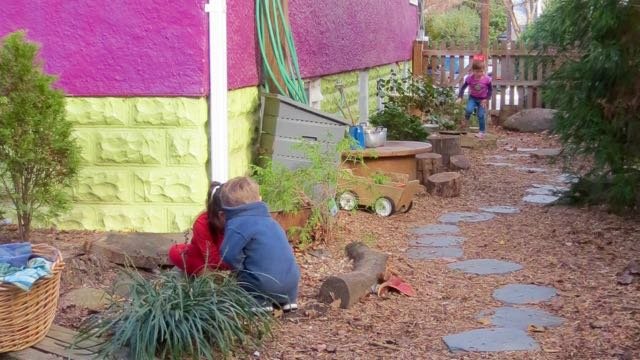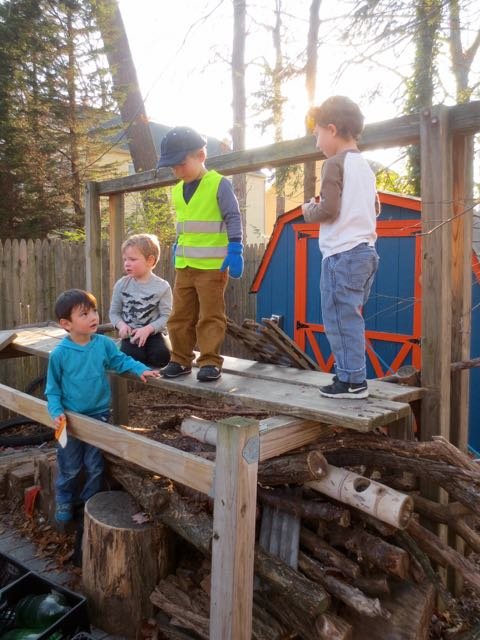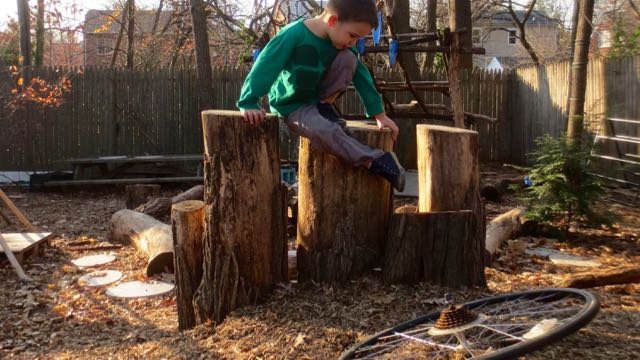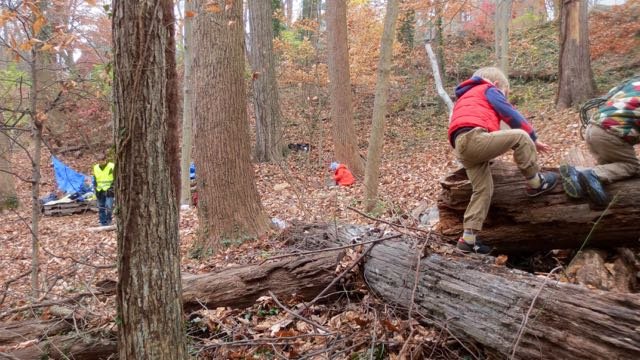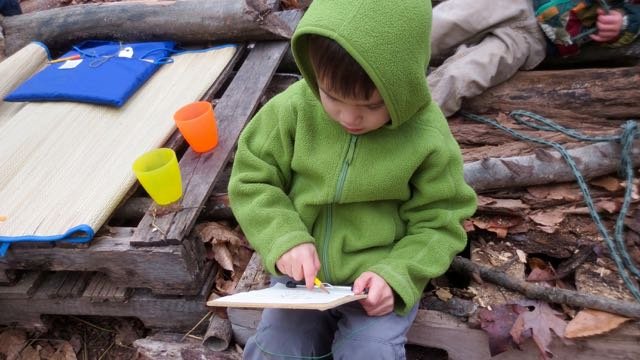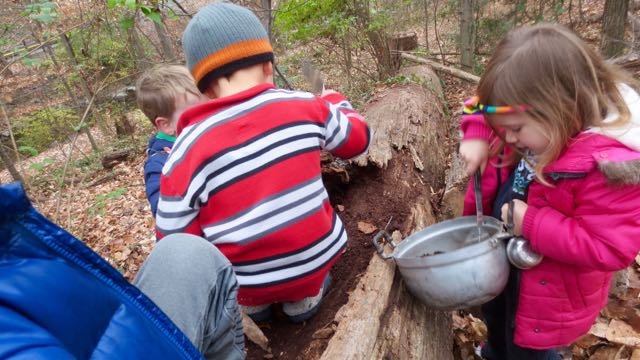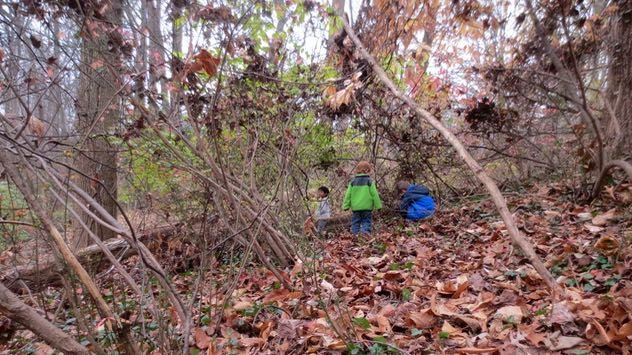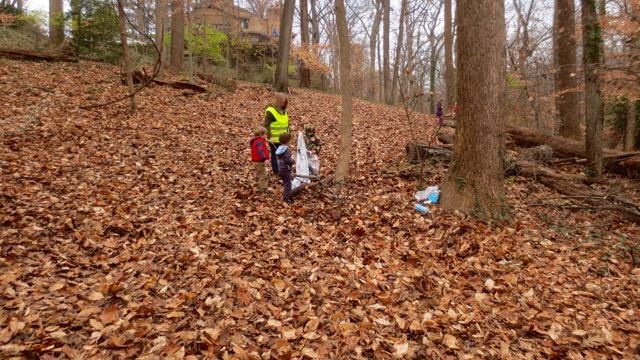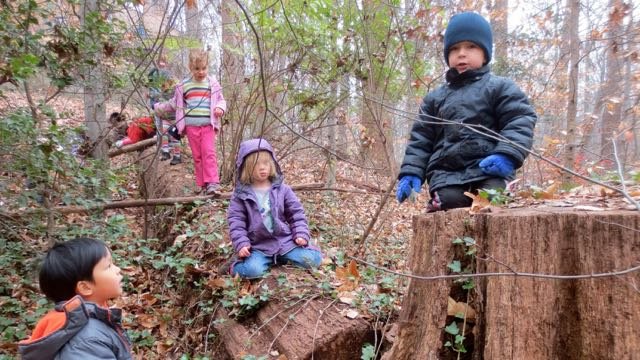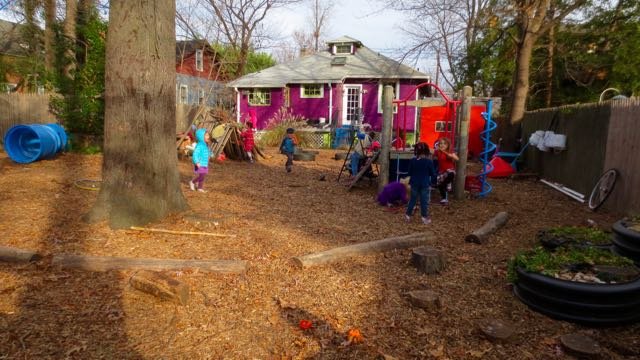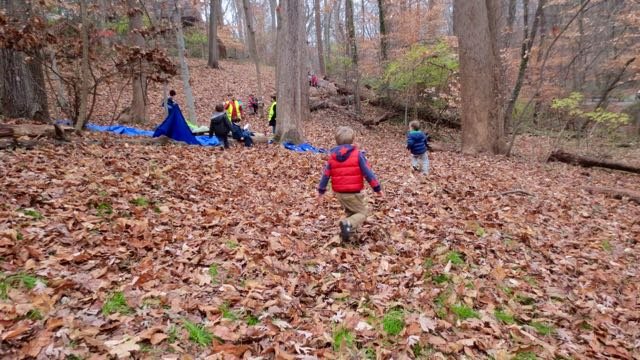Spaces and Destinations
Turn left from the creek path and you will find the door. The children call out, “Lesley use the key!” I pull the fancy, silver key out of my pocket and unlock the door. We duck down and go inside.
The threshold is a fallen tree, its bark long gone and now it is marked with the gauges of deer hooves as they run over and past it using the same trail we use to go into our part of the forest.
Once inside you will find a trolley line and a deer house. You will find a bakery. There is a hill and a mountain. There are tall trees with little house-homes at their base. There is a gully filled with large grey-white rocks. There are rooms, rooms everywhere.
I picked this spot because there are edges and there are rooms within the edges. Last year, the whole forest was “outside the edge.” We couldn’t often get in to where we wanted to go. Work crews cut a service road through the very section we were are now using. To be sure, the work crews themselves took great care with what the children built in the forest, recognizing kindred spirits of building and shaping, I suppose.
When they left, though, the landscape was changed. The great scar that was the service road with its gravel 5 and 6-feet deep that gave large construction vehicles loaded with pipe access to the creek below the ridge is now a glade. The gravel was removed and grass was planted. The poison ivy and invasive English ivy went with the gravel. The work crews left the trees they had to cut in criss-cross, triangular patterns along what used to be the road. An entirely new landscape was left. One that featured exactly what we are looking for when planning a play space for children.
Our playground at school is shaped around destinations for the children.
These destinations matched with the loose parts in the yard offer a “moveable feast” for the children. We are able to replicate this idea of spaces and destinations — not replicate it in terms of building it ourselves, rather simply finding it and holding our visits to this specific part of the forest.
The spaces and destinations both hold interest and support signals for play. The children maintain the boundaries without having actual fences. Perhaps the most interesting part of this story is that in previous years, the children always wanted to make sure we got back to the school in time to play in our own yard at the end of our forest trips. So far, this year, the forest is enough.

